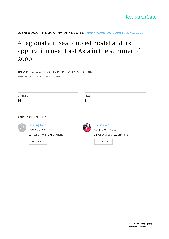摘要
A regional air sea coupled model, comprising the Regional Integrated Environment Model System (RI EMS) and the Princeton Ocean Model (POM) was developed to simulate summer climate features over East Asia in 2000. The sensitivity of the model's behavior to the coupling time interval (CTI), the causes of the sea surface temperature (SST) biases, and the role of air sea interaction in the simulation of precipitation over China are investigated. Results show that the coupled model can basically produce Hie spatial pattern of SST, precipitation, and surface air temperature (SAT) with five different CTIs respectively. Also, using a CTI of 3, 6 or 12 hours tended to produce more successful simulations than if using 1 and 24 hours. Further analysis indicates that both a higher and lower coupling frequency result in larger model biases in air sea heat flux exchanges, which might be responsible for the sensitivity of the coupled model's behavior to the CTI.
Sensitivity experiments indicate that SST biases between the coupled and uncoupled POM occurring over the China coastal waters were due to the mismatch of the surface heat fluxes produced by the RIEMS with those required by the POM. In the coupled run, the air sea feedbacks reduced the biases in surface heat fluxes, compared with the uncoupled RIEMS, consequently resulted in changes in thermal contrast over land and sea and led to a precipitation increase over South China and a decrease over North China. These results agree well observations in the summer of 2000.
- 出版日期2010-5
- 单位南京大学
